2016 Global Report
What is the role and responsibility of a for-profit public company?
A year ago, I posed this question at our annual shareholders meeting. This report includes some answers to that question.
We have always believed building a great, enduring company requires being performance-driven through the lens of humanity. I am proud that Starbucks not only achieved another year of record financial performance in 2014, but we did so while doing more for our people and the communities we serve than at any time in our history. By staying true to our mission, values and guiding principles, I believe we’ve proven it is possible to build a world-class company with a conscience.
Over the next few years, our efforts will increasingly focus in three areas where we think we can have the biggest impact – building a future with farmers, pioneering green retail on a global scale, and creating pathways to opportunity for young people. With your input, we want to set ambitious goals, some of which we may not achieve. But I strongly believe that today, more than ever, companies such as Starbucks must lead, using their platforms and resources to create opportunities for their people, as well as for the communities they serve.
We believe this is our role and responsibility.

Performance-driven through the lens of humanity
More than ever, companies such as Starbucks must lead, using their platforms and resources to create opportunities for their people, as well as for the communities they serve. We believe this is our role and responsibility.
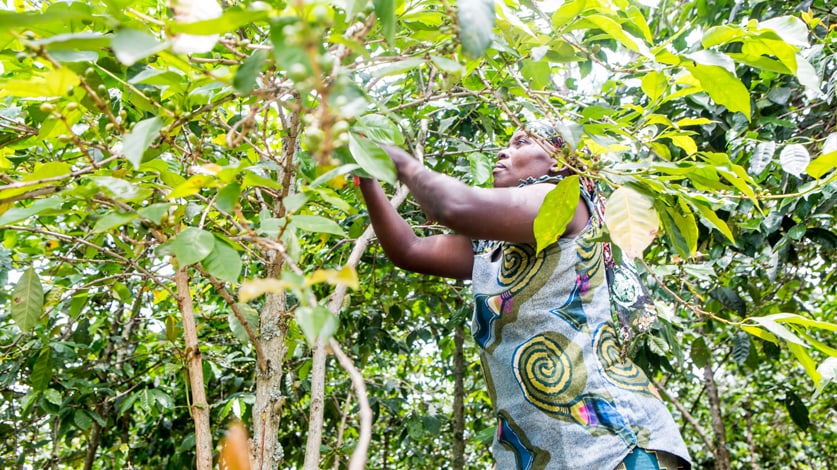
Pioneering a New Approach: Our Journey to 100% Ethically Sourced
At Starbucks, we know our success as a company is linked to the success of the thousands of farmers who grow our coffee.
Over the past 15 years, we have pioneered a new approach to ethical sourcing with an aim to both ensure a long-term supply of high quality coffee for our customers and positively impact the lives and livelihoods of coffee farmers and their communities. Our holistic model includes: responsible purchasing practices; farmer support; economic, social and environmental standards for suppliers; industry collaboration; and community development programs.
In 1998, Starbucks certified 35 million pounds of coffee. Today, almost 400 million pounds–or approximately 96% of Starbucks purchases–are grown sustainably, in a way that protects nature and improves farmers’ livelihoods. That’s extraordinary, and it is fundamentally changing the industry.
In 1999, when Starbucks was a company of just over 2,000 stores in a handful of countries, we recognized the need to do more to ensure the long-term supply of the high-quality coffee on which our business depends. We turned to Conservation International (CI) to help us promote environmentally responsible growing methods.
Addressing the environmental impact of coffee farming was only one piece of the puzzle. We needed a holistic approach to sourcing that also ensured fair pay and working conditions, economic transparency and sound resource management. In 2001, CI helped Starbucks develop broad quality, social, environmental and economic guidelines for the sustainable production of high-quality coffee.
Starbucks launched Coffee and Farmer Equity (C.A.F.E.) Practices in 2004 – one of the coffee industry’s first sets of comprehensive sustainability standards, verified by third-party experts. In our first year, Starbucks purchased 43 million pounds of green coffee under the program, representing 14.5% of our total green coffee purchases. Early on, we decided to “open source” our program, encouraging others in the industry to join us. We also continued to work with Fairtrade and other organizations to purchase certified coffee that helps protect the environment and the livelihoods of farmers in coffee-growing regions.
Starbucks ethical sourcing program continued to grow, and in 2008 we set a goal that by 2015, 100% of Starbucks coffee would be ethically sourced through C.A.F.E. Practices, Fairtrade, or another externally audited system. In 2014, 96% (400+million pounds) of our coffee met this standard, with 95.5% C.A.F.E. Practices, 8.6% Fairtrade, and 1% organic (some coffees receive multiple verifications or certifications).

Over the past decade, C.A.F.E. Practices has helped positively impact millions of workers, and improved the long-term environmental and social conditions on thousands of participating farms around the world. In our journey to 100% ethically sourced, we plan to work to continue to improve sustainability across our industry.
Building a Resilient Supply Chain through Partnerships
Climate change represents significant immediate and long-term risks to coffee farmers around the world, and Starbucks is looking at its potential impacts with organizations such as CI. As a result of this work, Starbucks has incorporated agricultural methods into C.A.F.E. Practices that help reduce emissions, improve carbon storage through shade and conservation areas, and proactively manage climate risks from pests and disease.
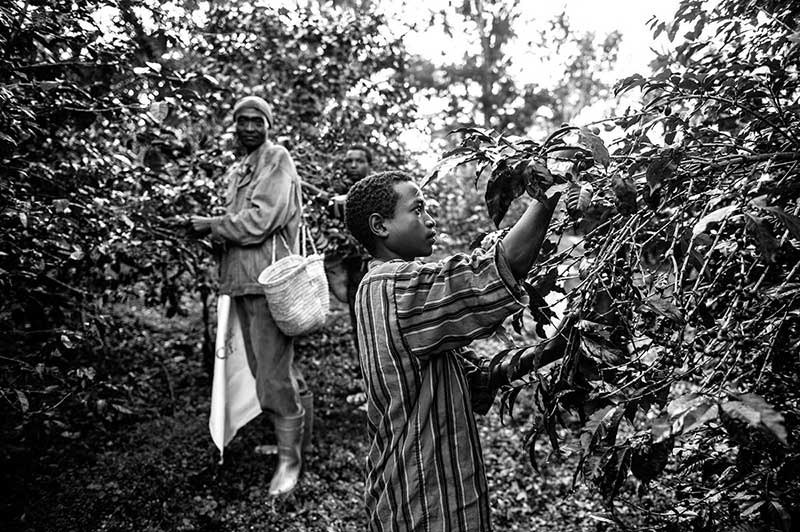
For the thousands of farmers who grow Starbucks coffee around the world, nothing can match the power of making a personal connection.
As Starbucks began to expand C.A.F.E. Practices ten years ago, we needed agronomists and quality experts in the field to help the program take root. We started with a small team in 2004 at Starbucks first Farmer Support Center in San José, Costa Rica. Over the next decade, Starbucks worked with cooperatives and farmers to help them improve coffee quality and farm productivity, and reduce production costs, while striving to raise living standards. Today Starbucks operates six Farmer Support Centers in key growing regions around the world including: Rwanda, Tanzania, Ethiopia, Colombia and China as well as a satellite office in Guatemala. We look forward to opening our first Farmer Support Center in Indonesia in the near future.

Starbucks has also gained valuable hands-on experience with the purchase of its first farm in 2013, not far from the first Farmer Support Center. Hacienda Alsacia is not only a fully operational coffee farm, it is also an agronomy research and development center that will help us continue to develop sustainable farming practices we can share with farming communities around the world.
In 2014, we released a limited time offering coffee that demonstrates the benefits of our approach. Starbucks Reserve® Costa Rica Geisha La Ines came from La Ines farm, it was a special coffee that resulted from a six-year collaboration between our agronomy team and a local cooperative to grow a coffee varietal that is more disease resistant and has exceptional quality.
The technical support Starbucks provides is not limited to farmers whose coffee we buy, but is available to all who are interested in improving quality and best agricultural practices. An innovative pilot launched in 2014 with the Grameen Foundation in Colombia will allow us to monitor and evaluate individual farm progress against our standards. Farmer leaders are being trained on the program so they can educate fellow farmers, jointly develop farm management plans and track progress using tablet computers.
Creating Impact through Farmer Loans and Community Investments
Coffee is grown primarily in countries with developing economies, and Starbucks green coffee pricing model aims to foster price stability and mutually beneficial relationships with suppliers, while paying the prices premium quality coffee commands.1
Providing access to credit at reasonable terms is another important component of our farmer support model. By investing in farmer loans, we are helping cooperatives manage risk and strengthen their businesses.
The health and stability of coffee communities impacts farmers and their ability to both be productive and raise sustainable crops. In 2014, Starbucks made a series of origin community grants, funded by sales of our Ethos® Water brand, to support critical infrastructure improvements and agricultural diversification projects. For example, in Tanzania, we’re working with Heifer International to help smallholder coffee farmers by introducing dairy cattle, and improving access to clean water, sanitation facilities, and renewable energy.
Starbucks investment in farmer loans with Root Capital has grown from $150,000 in 2000 to $12 million today, including a $3 million investment in 2014. Our contributions through Root Capital and other loan partners grew to $16.3 million in 2014, and we are optimistic we will reach our goal of $20 million in total investment in 2015.
Starbucks paid an average price of $1.72 per pound in 2014. This does not represent the coffee impact in the fiscal 2014 consolidated statement of earnings due to timing of when coffee is purchased (amount referenced above) versus when it is used (amount reflected in the consolidated statement of earnings).
Leading in Green Retail
Environment
As a company that relies on agricultural products, Starbucks has long been aware that the planet is our most important business partner.
We are committed to addressing climate change by minimizing our environmental footprint and creating meaningful and sustained change. This work includes our approach to green retail: building more energy efficient stores and facilities; conserving energy and water; investing in renewable energy; and exploring new solutions for recycling and making our cups sustainable.
While some of the ambitious environmental goals Starbucks set in 2008 are within reach, we have discovered unexpected challenges with others. This doesn’t mean we should aim lower. We believe in the importance of setting aspirational targets rather than settling for less ambitious targets, as well as learning from our experience to inform next steps.
Every time you order a Starbucks, you cast a vote for the powerful impact the retail environment can have on our efforts to mitigate climate change and improve the quality of life for all of us.
Surpassing 500 LEED®-Certified Stores
Starbucks has been an industry leader in green building for more than a decade, opening its first LEED®-certified store in Hillsboro, Oregon in 2005. Today, we continue to incorporate environmental building strategies across our store portfolio.
Since 2008, Starbucks has worked to build all new company-operated stores globally to LEED standards. In 2014, Starbucks opened our 500th LEED-certified store – more than any other retailer in the world. LEED has been successfully implemented in many markets where we operate, including 19 different countries. In the Americas, 98% of company-operated new stores were built to LEED standards in 2014. Globally, the percentage stands at 64%. Starbucks has experienced some technical challenges in international markets where the U.S.-based LEED certification program is still gaining traction. We are working with the U.S. Green Building Council to increase adoption of these standards.

Nearing Our Water Conservation Goal
In 2008 Starbucks set a goal to reduce our water use in company-operated stores 25% by 2015. We approached that goal in 2014 with a savings of more than 23% over baseline levels. We are continuing to make strides in water conservation by implementing water-saving solutions in new stores and water filtration retrofits in existing ones. LEED-certified stores have contributed to this progress by saving an average of 25,000 more gallons of water annually. Starbucks is actively collaborating with municipalities in water-stressed areas around the world to find additional ways to help reduce water consumption.
Recognizing the Energy Impacts of our Evolving Business
When Starbucks set an energy conservation goal of 25% in 2008, we knew it was ambitious. Over the past six years, we have incorporated energy conservation measures into our green construction strategy, such as using natural lighting where possible and installing energy-efficient light fixtures and appliances in both new and existing stores. The company recently completed the installation of new Energy Management Systems in approximately 4,000 stores to optimize heating and cooling and enable us to identify additional opportunities in the future.
Despite these efforts, energy performance has only improved a net total of 4.6% over our baseline levels, as energy requirements to support our expanded food platform offset gains from ongoing conservation measures. Even with the significant change in our business and associated increase in energy needs, we still project a net energy reduction by the end of 2015 versus our baseline and will continue to explore ways to reduce energy use going forward.
Investing in Renewable Energy

In addition to reducing water and energy consumption, Starbucks is focused on advancing renewable energy sources through purchasing practices. For almost a decade, Starbucks has been one of the U.S. Environmental Protection Agency’s top purchasers of renewable energy in the United States, buying more than half a billion kilowatt hours of wind energy over the past year alone. In 2014, Starbucks purchased renewable energy equivalent to more than 59% of the electricity used in our global company-operated stores.
Although we have applied renewable energy purchases to our total global energy footprint, the renewable energy credits purchased were primarily designed to spur development of the U.S. renewable energy market. We are working with our international partners to identify regionally relevant solutions. Currently, we are on track to purchase renewable energy equivalent to 100% of the energy used in our U.S. and Canadian company-operated stores by the end of 2015.
Breaking Down Barriers to Recycling
Providing front-of-store recycling is an important part of Starbucks effort to develop comprehensive recycling solutions. In 2014 we added customer-facing recycling to more than 760 stores, bringing our total to 3,849, or 47% of our company-operated locations in the U.S. and Canada.
By the end of 2015 we expect to complete the rollout of our recycling program across the U.S. and Canada. Unfortunately, this does not mean we can provide recycling in every store. We continue to face challenges with stores located in municipalities that don’t provide commercial recycling and with landlords who do not provide access to recycling services. We will continue to work across the industry to find innovative ways to reduce landfill waste and explore alternative solutions.
Raising Awareness of Reusable Cups
Reusable cups are an important component of Starbucks overall waste reduction strategy. For 30 years, we’ve rewarded customers with a discount when they bring in a personal tumbler. It is our goal to serve 5% of the beverages made in stores in tumblers and mugs brought in by our customers, and in 2014 our customers did that 47.6 million times, up from 46.9 million in 2013.
We have found that bringing a mug or tumbler to a Starbucks store requires a change in personal behavior, and have seen only gradual improvements in tumbler use year-over-year. Customer tumbler use briefly spiked up to 2.5% for a short time during the launch of the $1 reusable cup (£1 in the UK) and other special promotions such as the White Cup Contest, but consumer adoption remained flat to 2013’s overall level at 1.8%. We will continue to look for ways to encourage our customers to make the switch to reusable cups.
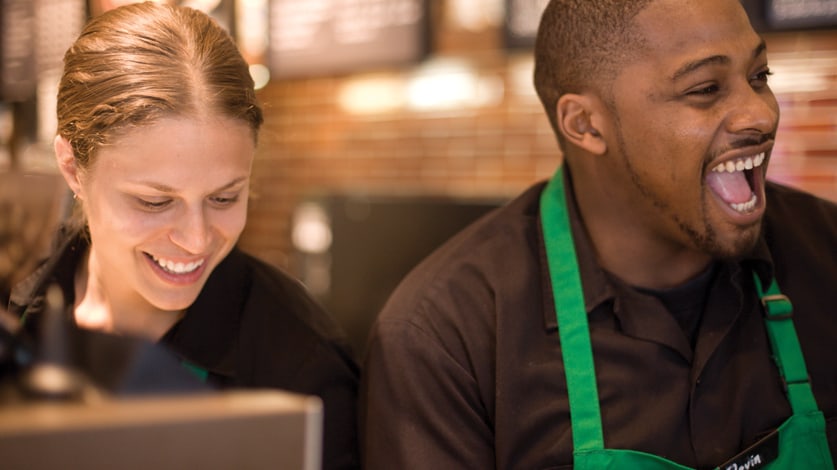
While our store operations account for the majority of our direct environmental footprint, we are also working to incorporate environmental design into our manufacturing facilities. This includes roasting plants, coffee processing facilities, and our Evolution Fresh juicery. We are excited that in 2014 Starbucks Roasting Plant and Distribution Center in York, Pennsylvania was certified for 100% Landfill Diversion by Underwriters Laboratories.
Creating Pathways to Opportunity
Starbucks has always been a place that has brought people together. Our mission: to inspire and nurture the human spirit – one person, one cup and one neighborhood at a time.
As a major employer - with 150,000 partners (employees) in the U.S. and more than 300,000 worldwide who wear the green apron - attracting and retaining the best people is critical to our business. Almost 73 million youth worldwide are looking for work, yet employers struggle to fill jobs due to a lack of qualified candidates. Something is broken. There’s clearly more need than any one company or industry can address, but Starbucks is increasingly focused on how we can leverage our business and our scale to start to respond to the crisis – one young person at a time.
“The partnership with Starbucks has been so much more than we imagined. They go way beyond; they roll up their sleeves and get the work done with us.” - Beatrice Garza, President & CEO, AAMA
Starbucks has always been a place that has brought people together. Our mission: to inspire and nurture the human spirit – one person, one cup and one neighborhood at a time.
Building the Workforce of the Future
Our efforts to help build the workforce of the future start with our own people. In 2014 we introduced the Starbucks College Achievement Plan - an innovative education benefit to help Starbucks partners complete their degrees online through Arizona State University. We have also hired nearly 2,000 new partners over the past year as a direct result of Starbucks multi-year strategy to hire 10,000 veterans and military spouses by 2018. We view both initiatives as key components of our strategy to attract partners who share Starbucks mission and values.
Investing in Lifelong Opportunity
Too many young people face systemic barriers to opportunity due to lack of education and/or skills needed to enter the workforce. This group is often referred to as “opportunity youth.”
In 2014 we awarded more than 100 grants through the Starbucks Youth Leadership program to local organizations in 14 countries. Although the programs and organizations vary around the world, the impact for youth is significant.
In the United States, Starbucks and the Schultz Family Foundation have supported a barista training program in Seattle for opportunity youth through YouthCare and FareStart for the past decade. In 2014 we expanded the program nationally, working with YouthBuild USA to create the Customer Service Retail Excellence Training Program, which helps students develop customer service skills based on the training Starbucks store partners receive.
In Canada, Starbucks supports workplace programs in Calgary, Toronto, and Vancouver, that combine in-class core life skills and employability training with real-life on-the-job work placement experience.
And in China, Starbucks is furthering our relationship with China’s Soong Ching Ling Foundation with a youth leadership development program to help students build their skills and access mentorships with Starbucks senior leaders.
As Starbucks continues to refine its focus on supporting lifelong opportunity, our grants program will shift to programs supporting opportunity youth to help address needs in their communities. For more information, please visit the Opportunity for Youth page on our website.
Collaborating through Community Stores
Starbucks Community Stores program supports local non-profit organizations in their efforts to provide the training and education that can eradicate the cycle of poverty for this generation of young people. Since opening our first Community Store in 2011, Starbucks has opened eight stores and raised over $900,000 toward local non-profits focused on providing opportunities to young people in those communities. The Community Stores model creates a reliable stream of resources for the non-profit organization, raises awareness of their work, and creates a space for community dialogue and engagement. In 2014, Starbucks added its second international location, in Seoul, Korea as well as two Military Community Stores to support transitioning veterans in the United States in Lakewood, Washington and San Antonio, Texas.
Promoting Global Service with Impact
Coming together in service represents a fundamental act of citizenship. In 2014, Starbucks worked with nonprofit organizations to bring our partners, customers, and community leaders together to contribute more than 520,000 hours of volunteer service around the world. During Starbucks fourth annual Global Month of Service in April, nearly 60,000 volunteers contributed over 232,000 hours in more than 30 countries. Altogether, the projects benefitted an estimated 1.4 million people with a value of $5.2 million for our communities. Although the total number of hours in 2014 decreased slightly over the previous year, we’ve also seen some encouraging trends. For every one hour contributed by a Starbucks partner, nearly two hours came from a customer. Our partners’ ability to bring their customers along on the journey to improve communities is one way we believe we are able to have a bigger impact.
Starbucks Foundation and Corporate Giving
The Starbucks Foundation is a separate 501(c)(3) charitable organization that receives funding primarily from Starbucks Corporation and private donations. The Starbucks Foundation gave $13.1 million in 2014, making 144 grants to nonprofit organizations. Grants included $3.37 million for Starbucks Youth Leadership Grants and $4.2 million in social development grants in coffee-growing communities.
In 2014 Starbucks Corporation gave $11.4 million in cash, including $1.9 million to the Starbucks Foundation, and $38.8 million in in-kind contributions. Corporate giving included funding for community-building programs – including a $2 million donation from the sales of Teavana® Oprah Chai Tea to the Oprah Winfrey Leadership Academy Foundation, and our partnership with (RED)™ through which Starbucks and our customers have generated more than $12 million since 2008 for the Global Fund to help eradicate HIV/AIDS in Africa.
Diversity and Inclusion
As a global company with a diverse customer base and an ever-changing workforce, diversity and inclusion is not just a business priority, it’s a necessity. A key element of our long-term growth strategy is creating a workforce that reflects the communities we serve around the world.
To achieve this, we are working to create opportunities to attract, develop, retain and engage our future workforce. We are focused on how we continue to evolve our diversity and inclusion strategy, to meet the challenges of our increasingly global business. From providing a platform for open conversation about inclusion, race, and other differences, to offering training focused on unconscious bias and elevating our partner networks, we not only want, we need partners to be actively engaged in our efforts.
Currently, about 40% of our U.S. partners are minorities; 65% are women. Of our vice presidents, 48% are women and 15% are minorities. Among our top leaders – defined as senior vice president or higher – 18% are minorities and 29% are women.
We know there are tremendous opportunities to engage diverse job candidates and partners, particularly through key company initiatives such as the Starbucks College Achievement Plan and the UK Apprenticeship Program. As part of this work, we are continuing to build and foster partnerships with diverse professional organizations, nonprofit organizations, businesses, civic leaders and individuals as key resources and connections to talent and the communities we serve.
As we continue to build our global footprint in the marketplace, diversity and inclusion will continue to be our strength, and a critical component of how we do business.
Looking ahead to where Starbucks wants to be in five years
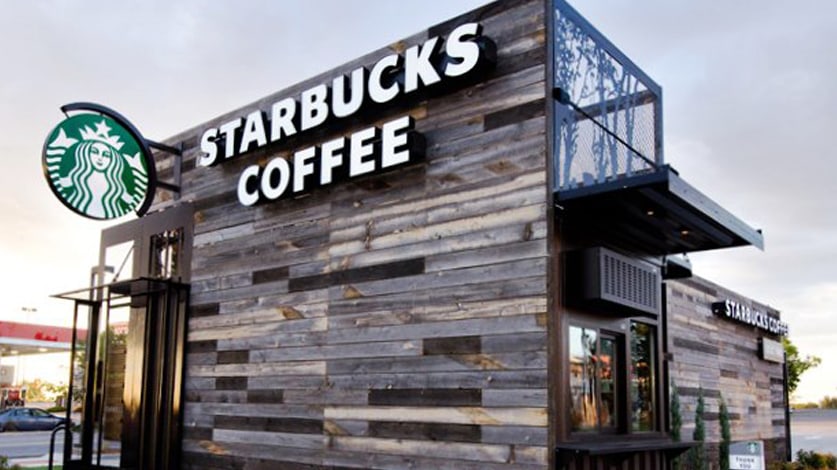
Building a Future with Farmers
As Starbucks continues its journey to 100% ethically sourced coffee, we believe it is possible to make coffee the world’s first sustainable commodity. We are also applying what we have learned to other areas of Starbucks business such as tea, cocoa, and manufactured goods.
Pioneering Sustainable Solutions
Using our scale to innovate and test green practices, we are now challenging ourselves to harness what we’ve learned to continue to drive positive change both within our own stores and across the entire industry. We will also continue to mitigate the risks to economic, social and environmental stability and advocate for climate legislation through Business for Innovative Climate and Energy Policy (BICEP) and others.
Creating Pathways to Opportunity
We believe taking a comprehensive approach to creating pathways to opportunity offers Starbucks a way to contribute to the neighborhoods in which we do business, while supporting the young people who will be our future workforce. As a key next step, we have committed to hire 10,000 opportunity youth by 2018.
By collaborating with passionate and knowledgeable organizations across every sector, we will identify and implement innovative solutions to challenges at local, national, and international levels.
As we near the end of our 2015 objectives, Starbucks looks ahead to a new chapter setting goals for 2020. Over the next year, Starbucks looks forward to engaging stakeholders around the world as we determine how best to deliver on our responsibility as a for-profit, public company.
Please feel free to share your feedback with us at globalresponsibility@starbucks.com. For an overview of progress on our 2015 goals, see the charts on pages 15-18 of the full report.
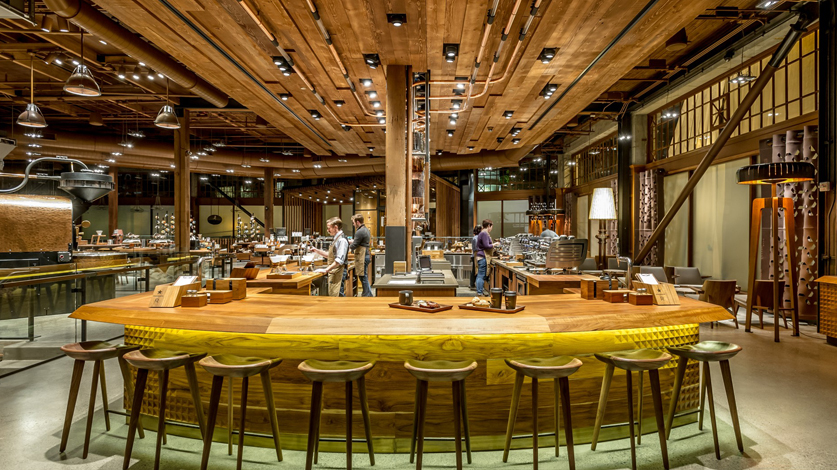
To inspire and nurture the human spirit – one person, one cup and one neighborhood at a time.